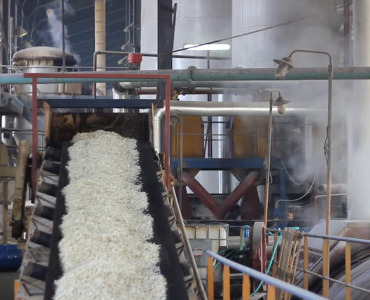Best Cane Sugar Processing Chemicals: Relied On by Industry Specialists
Best Cane Sugar Processing Chemicals: Relied On by Industry Specialists
Blog Article
Maximizar Rendimientos Y Minimizar Costos: Estrategias Avanzadas Para La Optimización Química Del Procesamiento De Azúcar De Caña
In the realm of walking stick sugar handling, the pursuit of optimizing returns while concurrently lessening prices stands as a formidable difficulty that needs a critical blend of advanced chemical optimization techniques. The complexities of this undertaking explore the core of efficiency, where every aspect of the procedure plays a critical role in achieving ideal results. By discovering the details of chemical evaluation, enzyme utilization, pH control, filtration, and distillation techniques, a landscape abundant with chances for improvement and technology arises. Among this detailed internet of strategies exists the promise of unlocking untapped potential and revolutionizing the very essence of sugar manufacturing. Cane Sugar Processing Chemicals.
Chemical Analysis for Efficiency
Chemical evaluation plays an essential function in enhancing the efficiency of sugar walking cane processing by offering crucial understandings right into the composition and residential or commercial properties of the raw materials. By performing in-depth chemical analyses on sugar walking cane samples, processors can figure out the precise focus of sucrose, sugar, fructose, and other parts present in the raw product. This info is vital for enhancing the various phases of the sugar cane handling chain, from grating to formation.
Additionally, chemical analysis allows processors to determine impurities such as natural acids, proteins, and minerals that can influence the quality and return of the final sugar item. By quantifying these pollutants, cpus can execute targeted approaches to eliminate or minimize their effects, inevitably improving the general performance of the processing plant.
In addition, chemical analysis helps with the surveillance of process specifications such as pH, temperature level, and thickness, allowing processors to make real-time changes to ensure ideal problems for sugar removal and crystallization. In general, a detailed understanding of the chemical composition of sugar walking stick is crucial for taking full advantage of returns, decreasing costs, and maintaining high product high quality in the sugar manufacturing sector.

Enzyme Application for Enhanced Returns
With a strategic method to enzyme application, sugar cane processors can dramatically enhance their yields while keeping functional efficiency in the production procedure. Enzymes play a crucial role in sugar walking stick handling by damaging down complex carbohydrates into easier sugars, hence increasing the overall sugar extraction effectiveness. By including specific enzymes tailored to target the different elements of sugar walking stick, such as cellulose and hemicellulose, cpus can boost the launch of sugars throughout extraction.
Enzyme usage uses the benefit of making best use of sugar yields from the raw material while minimizing the energy and resources required for processing. This results in a much more sustainable and affordable production process. Furthermore, enzymes can help in minimizing processing time and improving the general high quality of the sugar product. Through careful selection and application of enzymes, sugar cane cpus can maximize their procedures to achieve higher yields and profitability.
Ph Control for Ideal Processing
Enzyme utilization for raised returns in sugar walking stick processing lays the structure for attending to the vital aspect of pH control for optimum handling efficiency. Keeping the proper pH level throughout various phases of sugar cane handling is necessary for optimizing yields and decreasing expenses. pH control is particularly critical during the removal and information processes. In the removal phase, preserving the correct pH aids in achieving reliable sucrose extraction from the walking cane. Managing the pH throughout clarification help in the precipitation of contaminations and non-sucrose components, causing a purer final this contact form item. PH affects the activity of enzymes included in the breakdown of macromolecules, affecting the total efficiency of the process. By meticulously keeping an eye on and readjusting the pH levels at different handling actions, sugar cane processors can boost sugar recovery prices, reduce chemical usage, and maximize the general manufacturing process. Effective pH control not only enhances the high quality of the end product however additionally contributes to sustainable and economical sugar walking cane handling procedures.
Advanced Filtering Methods
Executing advanced filtration strategies in sugar walking cane handling improves the effectiveness and purity of the final item with fine-tuned separation approaches. By including innovative filtering technologies, such as membrane layer purification and turned on carbon purification, sugar cane processing plants can achieve greater degrees of sugar recuperation and enhanced quality this article assurance.

Activated carbon filtration is an additional innovative strategy that aids in the elimination of colorants, off-flavors, and residual contaminations from sugar walking stick products. By utilizing activated carbon's adsorption buildings, this filtration approach enhances the clearness and taste of the sugar, meeting the high requirements demanded by customers and industry guidelines.
Energy-Efficient Purification Approaches
Energy-efficient purification techniques are important for enhancing the sugar walking cane processing market's energy consumption while keeping high-quality product requirements. Typical purification processes can be energy-intensive, leading to greater manufacturing costs and environmental influences (Cane Sugar Processing Chemicals). Applying energy-efficient distillation methods, such as vacuum distillation or molecular distillation, can significantly decrease power demands while enhancing total process effectiveness
Vacuum cleaner purification includes lowering the stress within the distillation system, which lowers the boiling factor of the liquid blend being processed. This decrease in boiling point lowers the energy needed for vaporization, leading to energy cost savings contrasted go to my site to standard purification techniques.
On the other hand, molecular distillation makes use of brief course distillation methods under high vacuum problems to different substances based on their molecular weight. This approach is especially efficient for heat-sensitive substances, as it operates at lower temperatures, lowering energy intake and preserving item top quality.
Verdict

Report this page